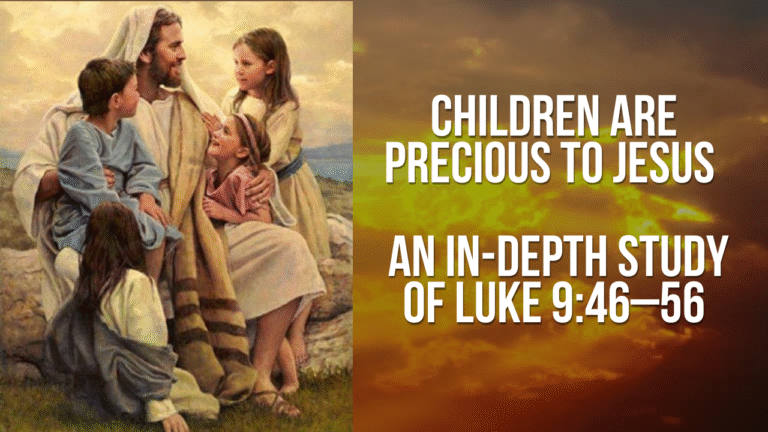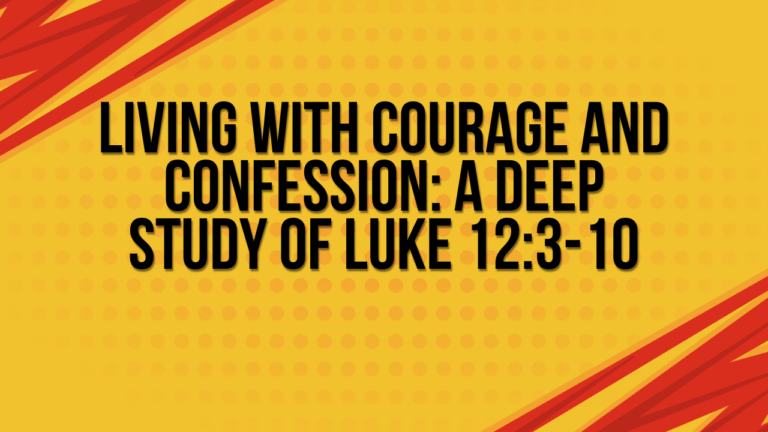“I Do Not Permit a Woman to Teach”: Unpacking the Context of 1 Timothy 2:12
Introduction: The Lightning Rod Verse
Few passages in the New Testament generate as much intense debate and personal struggle as 1 Timothy 2:11-12. For many, it feels like a definitive, universal rule: “A woman should learn in quietness and full submission. I do not permit a woman to teach or to assume authority over a man; she must be quiet.” For others, it represents a painful contradiction to the spirit of freedom in Christ and the evidence of women leading throughout the Bible. It has been used to restrict, silence, and marginalize women in churches for centuries. But is that what the Apostle Paul intended?
To approach this text responsibly, we must resist the temptation to lift it from its context and apply it as a timeless, blanket statement. The Bible is not a collection of disconnected proverbs; it is a story, a series of letters written to specific people in specific places dealing with specific problems. 1 Timothy is a pastoral letter, meaning it was written by Paul to his protégé, Timothy, to help him address crises in the Ephesian church. Understanding the nature of that crisis is not a way to “explain away” a difficult command, but to understand its true purpose and meaning. This post will delve into the historical, cultural, and literary context of 1 Timothy 2:12 to discover a message that is likely far more specific and situation-dependent than it first appears.
The Situation in Ephesus: What Was Timothy Facing?
To understand any part of 1 Timothy, we must understand the church to which it was written. Ephesus was a major cosmopolitan port city, a melting pot of cultures and religions. It was famously the home of the Temple of Artemis, one of the Seven Wonders of the Ancient World. The worship of this fertility goddess was central to Ephesian identity and economics (see Acts 19:23-41).
The Ephesian church was under attack not from outside persecution, but from within by false teachers. Paul opens his letter by immediately urging Timothy to “command certain people not to teach false doctrines any longer” (1 Tim. 1:3). These false teachers were promoting “myths and endless genealogies” (1:4) that were causing disputes and leading people away from the gospel of grace.
A key characteristic of this false teaching seems to have been a over-realized eschatology and a distorted view of creation. Some scholars suggest it was an early form of Gnosticism, which often viewed the material world as evil and the spiritual world as good. This led to two possible extremes:
-
Asceticism: The rejection of the physical, including marriage and certain foods (1 Tim 4:3).
-
Libertinism: The belief that since the spirit was all that mattered, one could do anything with the body, leading to immorality.
Crucially, it appears these false teachers were specifically targeting women in the church. In 2 Timothy 3:6-7, Paul writes that these evil imposters “worm their way into homes and gain control over gullible women, who are loaded down with sins and are swayed by all kinds of evil desires, always learning but never able to come to a knowledge of the truth.” The women in Ephesus, likely less educated in Scripture than the men on average, were particularly vulnerable to this deceptive and speculative teaching.
Key Phrases in the Greek: “Quietness,” “Teach,” and “Assume Authority”
A word-for-word translation from Greek to English is often clumsy and can obscure meaning. Three key words in 1 Timothy 2:11-12 demand a closer look:
-
“Quietness” (Hēsuchia): This does not mean complete silence or the absence of speech. The same word is used in 2 Thessalonians 3:12, where Paul instructs people to “settle down and earn the food they eat.” It conveys a sense of tranquility, peaceableness, and a lack of disruption. It is the opposite of being quarrelsome or disruptive. The command is for women to learn in a calm and receptive manner, which was a contrast to the disruptive behavior some were exhibiting under the influence of the false teachers.
-
“Teach” (Didaskein): In the context of the first-century church and the Pastoral Epistles, “teaching” (didaskalia) carried a very specific weight. It referred to the authoritative proclamation and preservation of the apostolic tradition—the core gospel message. It was the role of guarding the “deposit of faith” (1 Tim 6:20) against corruption. This is distinct from other forms of instruction, encouragement, or prophecy (which women clearly participated in, as seen in Acts 2:17, 18:26, 21:9; 1 Cor. 11:5). Paul’s prohibition here is likely against women taking on the official, authoritative teaching role of preserving apostolic doctrine because, in Ephesus, they were the ones who had been most recently deceived and were not yet trained to defend it.
-
“Assume Authority” (Authentein): This is the most critical and debated word in the entire passage. This is the only time this specific Greek word appears in the entire New Testament. Paul did not use the more common Greek word for authority (exousia), which is often used in a positive or neutral sense. Authentein is a much stronger, rarer, and often negative word. In extra-biblical Greek literature of the time, it could carry meanings like “to dominate,” “to usurp authority,” “to act autonomously,” or even “to murder.” This suggests Paul is not prohibiting women from holding any form of leadership or authority per se, but from seizing it in a destructive, domineering, or inappropriate way—precisely the kind of behavior that might result from being misled by the false teachers. He is condemning a specific type of authority-grabbing, not the concept of women in leadership.
The Argument from Creation: Adam and Eve
Paul supports his instruction by reaching back to the creation narrative (1 Tim 2:13-14). He states that Adam was formed first, and then Eve, and that Adam was not the one deceived, but the woman was deceived and became a sinner.
This has often been interpreted as a universal principle based on the order of creation (male priority) and the nature of woman (more easily deceived). However, in the context of the Ephesian crisis, a different reading emerges. The false teachers were likely promoting their own distorted version of the creation story. A common Gnostic-like myth later was that Eve was created first and was the source of spiritual enlightenment for Adam.
Paul, therefore, is not making a statement about the inherent nature of all women for all time. He is correcting the specific false myth circulating in Ephesus by reaffirming the Genesis account. He is saying, “This is what actually happened: Adam was formed first, and it was Eve who was deceived by the serpent. This is why the women among you, who are currently being deceived by a modern-day serpent (the false teachers), are not qualified to be the authoritative teachers and defenders of the truth at this time.” His argument is situational, using creation to address a specific problem of deception.
Evidence of Women Leaders Elsewhere: A Consistent Pattern?
If Paul intended 1 Timothy 2:12 to be a universal, timeless ban on women teaching or leading in any capacity, it creates significant tension with the rest of his writings and the New Testament record. Paul himself worked alongside and endorsed women in leadership roles:
-
Priscilla: Paul mentions her alongside her husband Aquila as a “co-worker in Christ Jesus” (Rom. 16:3). In Acts 18:26, both Priscilla and Aquila took Apollos aside and “explained to him the way of God more adequately.” She was clearly involved in teaching.
-
Phoebe: A deacon (diakonos) of the church in Cenchreae and a benefactor of Paul (Rom. 16:1-2).
-
Junia: Paul greets Andronicus and Junia, noting they are “outstanding among the apostles” (Rom. 16:7). For centuries, translators masculinized her name to “Junias,” but the evidence strongly supports that this was a female apostle.
-
Euodia and Syntyche: Paul refers to these two women as women “who have contended at my side in the cause of the gospel” (Phil. 4:2-3).
-
Philip’s Daughters: Acts 21:9 mentions Philip the evangelist’s four unmarried daughters who “prophesied.”
This evidence makes it highly inconsistent to believe that Paul held a blanket opposition to women in ministry. The instruction in 1 Timothy 2 must be read as a specific, pastoral response to a specific, critical situation in Ephesus.
Conclusion: Principles Over Prescriptions
So, what does 1 Timothy 2:12 mean for the church today? The application is not a simple copy-paste of the command. Instead, we must discern the underlying principles that transcend the first-century context:
-
The Principle of Sound Teaching: The church must fiercely guard the integrity of the gospel message. Anyone who teaches must be thoroughly grounded in truth and resistant to deceptive doctrines.
-
The Principle of Orderly Conduct: Worship should be conducted in a peaceful and orderly manner, not disrupted by those who are unlearned or influenced by error.
-
The Principle of Qualified Leadership: Leadership roles, particularly the authoritative teaching of doctrine, should be reserved for those who are spiritually mature, well-trained, and faithful to the apostolic tradition.
The permanent principle is not “women must never teach men.” The principle is that anyone—man or woman—who is uneducated, recently deceived, or prone to domineering behavior should not be placed in a position of authoritative teaching until they have been thoroughly grounded in the truth. The message to the modern church is to focus on equipping and empowering all people based on their gifting and calling in Christ (Galatians 3:28), while maintaining the utmost seriousness about the quality, character, and doctrinal soundness of its teachers. The goal is not restriction, but redemption, maturity, and the flourishing of the whole body under the headship of Christ.







